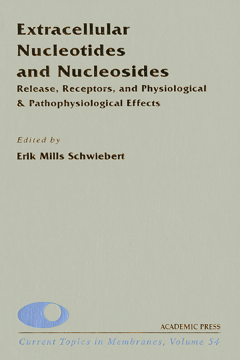
BOOK
Extracellular Nucleotides and Nucleosides: Release, Receptors, and Physiological & Pathophysiological Effects
(2003)
Additional Information
Book Details
Abstract
Purinergic receptors are proteins that bind ATP as their extracellular ligand. Once thought only as an intracellular molecule that provides energy, ATP is also now considered an essential autocrine/paracrine agonist that acts extracellularly within tissues and tissue microenvironments. Receptors for ATP and its metabolites, so-called "purinergic receptors," are essential membrane receptors that transduce the extracellular signal carried by ATP. Many cell types or tissues express multiple types of these receptors, often on the same cell. This volume will cover the history and overall impact of extracellular ATP signaling, methods to detect ATP release and signaling, the molecular and cell biology of purinergic receptors, the pharmacology of purinergic receptors, the ion channel biophysics and biochemistry of P2X purinergic receptor channels, and the physiology and pathophysiology of purinergic receptors.
Key Features
* Organized and written by world-renowned experts
* Covers state-of-the-art experimental methods
* Has broad appeal to basic and clinical scientists, the biotch industry and pharmaceutical research companies
